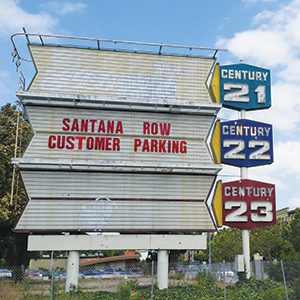

A few stories came out last week to mark the 30th anniversary of the 1987 film The River’s Edge, based on a grotesque murder in Milpitas. The teenage killer left his victim’s corpse in the woods for a few days, inviting his friends to come over and check it out. Only then was the crime finally reported.
It was a horrific incident that unleashed a national media firestorm. When the film came out, it likewise shocked the country.
The River’s Edge opens with the killer sitting at the victim’s body and then cuts to him and his pals trying to buy beer at a Stop ‘n’ Go convenience store, which were common in those days. Then we get an 80-minute window into the lives of alienated teenagers dealing with the fallout, a picture that successfully flipped the bird at all the Molly Ringwald-worshipping mallrat garbage that constituted teen films at that time. The River’s Edge featured a then-unknown Keanu Reeves in his first major appearance. Crispin Glover and Dennis Hopper also gave legendary performances.
Directed by Tim Hunter, the film was either an abomination or a masterpiece, depending on how much denim and leather one wore as a teenager in the ’80s—and to what degree one drank outside the Stop ‘n’ Go across from their high school. From this perspective, The River’s Edge was a glorious paean to suburban wasteland despair, accurately depicting disenfranchised, emotionally distant teenagers blasting thrash metal from their beater cars and endlessly searching for Dennis Hopper-style wackos to buy beer for them. That was my life at that time.
Musically speaking, Slayer was still an underground band in those days—the “Reign in Blood” album had not been released as the film was being shot—so only underground troublemakers like us listened to that music. As a result, to hear Slayer in a soundtrack, to see teenagers driving around while playing that music five minutes into the movie, was just plain righteous. Seeing the film at Century 22 on Winchester, a few friends and I even showed up wearing denim and leather, just like the kids in the movie. Legends in our own minds, we did it to horrify others in the theater. I don’t know if it worked.
Some more context, if you will: In 1987, a Sony Walkman was $38 at The Good Guys. Brand new CDs at Tower were $14.99. Photo Drive-Up rented VHS tapes for $1 per movie, per day. High culture in South San Jose was essentially driving or taking the bus to Record Factory and arguing with the hair-metal idiot behind the counter as to whether Maxell or TDK blank cassettes were better quality. And it only took a Dio shirt to scare the jocks and cheerleaders in high school.
There was nothing else to do except find alcohol and get wasted in parks and hillsides at nighttime. In that sense, The River’s Edge depicted San Jose better than anything I’d seen. I’m just glad this town has a lot of parks.
Which is why, 30 years later, I just had to skulk back over to Winchester and see what’s left of the Century theaters, now that Santana Row has for all practical purposes murdered them and left their corpse shells to rot in the open sun. It won’t be long only until they are cannibalized by “The Row.”
I got as far as the road sign. That was enough. Right there on Winchester, the old legendary Century Theater sign, familiar as my own reflection in the mirror, now says: Santana Row Customer Parking.
To that end, I guess no one should have been surprised when the Century domes were yanked off life support. The traditional cinema experience is fading. Land is expensive around here. Developers are ruthless and selfish because they know that City Hall ultimately won’t care. And so we drift along in the stream of Netflix and YouTube.
All of this will produce another generation of bored teenagers filled with despair. But don’t worry. They won’t wind up like characters in The River’s Edge. That would take too much work.



